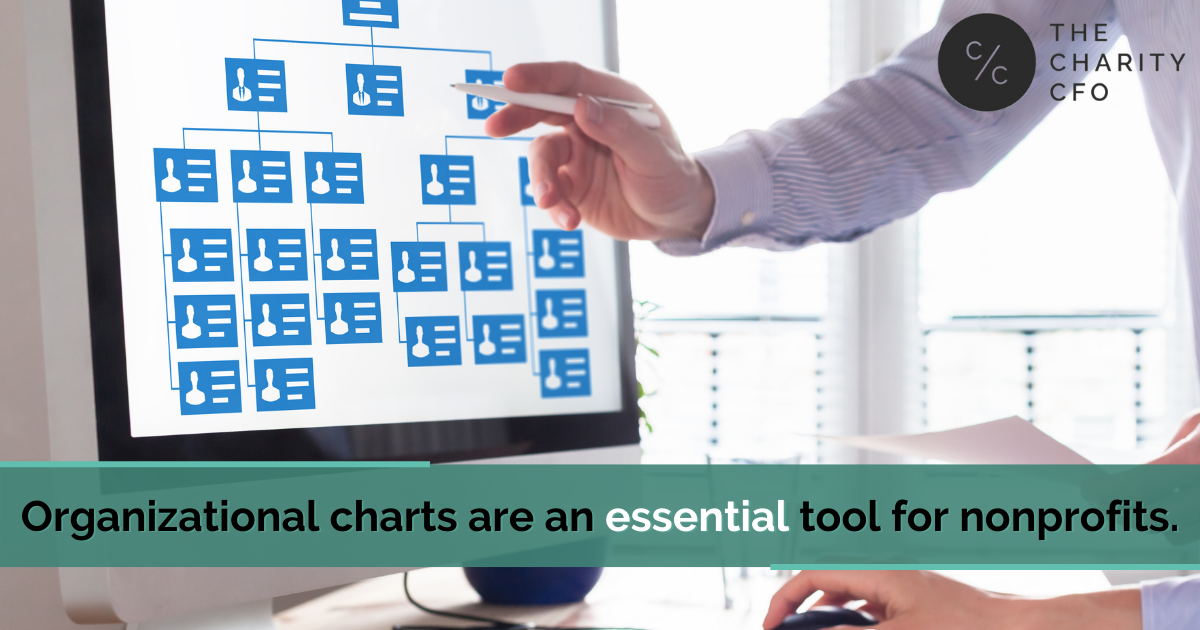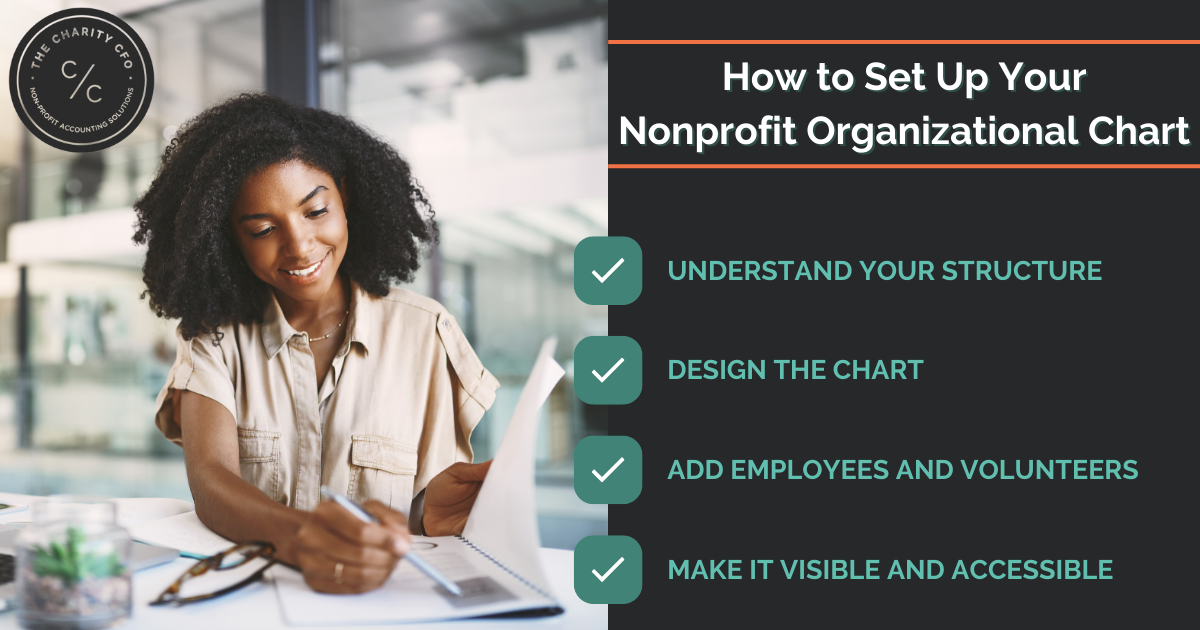A nonprofit organizational chart is essential for the company’s success and growth. The internal structure or hierarchy of the organization must be organized and efficient to ensure that there are adequate resources and personnel in place to achieve its goals and mission.
A nonprofit organization chart, also known as an org chart or organogram chart, is a useful tool that is used to create a graphical representation of the structure of the organization and its various departments. It provides an effective way to organize, plan, and manage resources within the nonprofit structure.
Org charts are also used as a management tool to improve team performance, streamline processes, and reduce friction between departments. This can help with internal communication, problem-solving, conflict resolution, and growth acceleration.
With its organization-wide uses and benefits, it only makes sense to have a well-thought-out organogram for your nonprofit organization. So, what do you need to know and consider when setting up a nonprofit organizational chart?
Let’s find out.
What are Nonprofit Organizational Charts?
An organizational chart is a diagram that displays the internal structure of a nonprofit organization. It shows the relationships between different levels and positions in the nonprofit organization. These diagrams can include information about job titles, responsibilities, job roles, reporting relationships, and communication channels between different departments or divisions
Organizational charts can be used to illustrate various touchpoints in your nonprofit organization’s structure. They are usually used to make a statement, through design, on the organization’s culture, beliefs, values, and philosophies.
A well-designed org chart acts as a lifeline for new employees, helping them understand where they fit into the overall structure during onboarding. They can help to create a shared understanding of roles and responsibilities among teams, which in turn improves communication and collaboration between departments.
Organizational charts are also useful tools when it comes to developing strategies, setting goals, establishing policies, and making decisions. Every stakeholder should understand the structure of the organization and the goals it seeks to achieve. You don’t want any team member just skating by.
Why do you need an organizational chart?
An up-to-date org chart serves several important functions for your nonprofit:
- Helps the entire organization understand the chain of command
- Helps potential donors, grantors and volunteers understand who is steering the ship
- Helps new hires to know their colleagues and managers
- Provides an overview of how tasks and projects are distributed throughout the organization
- Ensures that each department understands its mission, roles, and responsibilities, hence strengthening and optimizing collaboration
- Helps the management or HR to anticipate skill and talent gaps, leadership needs, training needs, and future staffing needs
- Helps increase organization-wide productivity and performance
- Org charts give an eagle-eye view of the whole organization and juxtapose functions against each other, giving the management a clear picture of the expenses, overhead costs, and other operational issues.
We recommend building your nonprofit org chart based on functional areas such as administration, operations, programs, strategy, governance, fundraising, and development. Then further subdivide within each area, depending on the purpose and goals of your nonprofit. This will create a structure for your nonprofit that is flexible and allows for changes to be made as, and when needed.
Types of Organizational Charts
Most people are only aware of the classic hierarchical box-style org chart that shows a clear chain of command, with each position directly reporting to the one above it. But there are actually several different types of organizational charts. Depending on your nonprofit’s location, structure, and needs, you can choose among the following types:
-
The top-down chart
This is perhaps the easiest to understand, as it follows a traditional business model with an executive team at the top and all other positions directly reporting to them.
-
Flat chart
This chart structure has fewer layers and a limited hierarchy. It’s useful for small organizations that need to be agile and make decisions quickly. The day-to-day decision-making is made by individual staff members running their own functions and reporting to the board of directors. This type of organizational chart can be useful in terms of accountability, cost savings, and internal communication.
-
Functional org chart
A functional chart shows the relationship between the departments and their managers and organizes them according to their duties and responsibilities. It starts with the management, followed by department/team leaders, followed by other staff members.
-
Cross-functional org chart
If you have small teams spread through various departments, you can use a cross-functional org chart. This structure focuses on how various roles and tasks are related, instead of showing who reports to whom. It’s useful for collaborative projects, as it makes it easier to understand how teams are organized and who is responsible for what.
-
The matrix chart
The matrix organizational structure is a cross-functional structure that allows you to create two or more reporting relationships for each employee. The matrix chart is created by linking the different departments of your organization on a chart. It’s often used when an organization has multiple products, services, or projects that need to be managed. By linking these departments on a chart, you can easily see how each department interacts with the others. This helps to create an efficient and effective workflow for your nonprofit organization.
How to Set Up Your Nonprofit Organizational Chart
Once you’ve chosen the type of organizational chart that best suits your nonprofit, it’s time to set it up.
1. Understand your structure
The first step is to gain a clear understanding of how your nonprofit operates and the roles and responsibilities of each team. This will help you create an organizational chart that reflects your current structure and makes it easier to identify areas for improvement.
Here are several things you’ll need:
- A comprehensive list of the executive, employees, and volunteers
- Recent pictures of each individual
- A detailed rundown of the roles and responsibilities of each position
- A solid understanding of the organizational structure and chain of command
2. Design the chart
Use tools such as Photoshop, Indesign, Canva, Airtable, or Microsoft Office to idealize and create your chart. Or you could use an online template from websites like Lucidchart, Creately, or Gliffy to drag and drop elements and create a professional org chart.
3. Add employees and volunteers
Once you’ve created the chart, it’s time to add all your employees, volunteers, and executive members. Include their name, position, department, and recent pictures to make the chart more engaging and easier to read. Some must-have roles to include are CEO, board of directors, executive team members, departmental heads such as Chief Finance Officer (CFO), and administrative staff.
After you’ve added all the members, double-check to make sure that everyone is in the right place and their roles are accurately represented.
4. Make it visible and accessible
Once the organizational chart is complete, make sure to display it in the work area or the lobby of your organization. This will help everyone quickly grasp the structure, roles, and responsibilities of each department, and who reports to whom. It’s also a great way to introduce new members and volunteers to the organizational structure.
Need a CFO for Your Organization?
Organizational charts are an essential tool for nonprofits. They can help create a clear understanding of the roles and responsibilities within an organization, and give stakeholders a better idea of how decisions are made.
Obviously, most nonprofits will have the executive team all set up and forget or struggle to fill important positions such as the program officer, director of events and projects, grant writer, and chief financial officer (CFO). This complicates the organization chart and makes it harder to visualize the chain of command.
Finding a qualified and experienced CFO can be particularly difficult, expensive and out of reach for small nonprofits with limited resources. Fortunately, there are organizations such as The Charity CFO which specializes in providing industry-leading accounting and bookkeeping solutions, specifically for nonprofits.
If you’re looking for a CFO to help manage financial operations and fill the vital role of Chief Financial Officer on your org chart, we are the perfect choice for your organization.
We provide a comprehensive, affordable, and audit-ready financial management system to nonprofit organizations just like yours. Our team consists of experienced CFOs, CPAs, bookkeepers, and financial advisors who understand the complexities of running a nonprofit— so you won’t need to hire a full-time CFO for your organization. Contact us today to learn how our services can help you achieve your financial goal and deliver impactful results.

Do You Struggle to Make Sense of Your Financial Statements?
Get our FREE GUIDE to nonprofit financial reports, featuring illustrations, annotations, and insights to help you better understand your organization's finances.
Get the free guide!



0 Comments